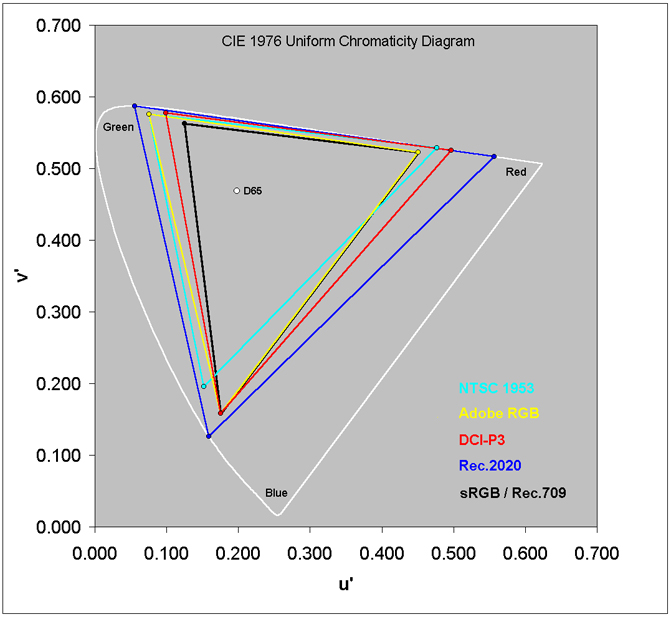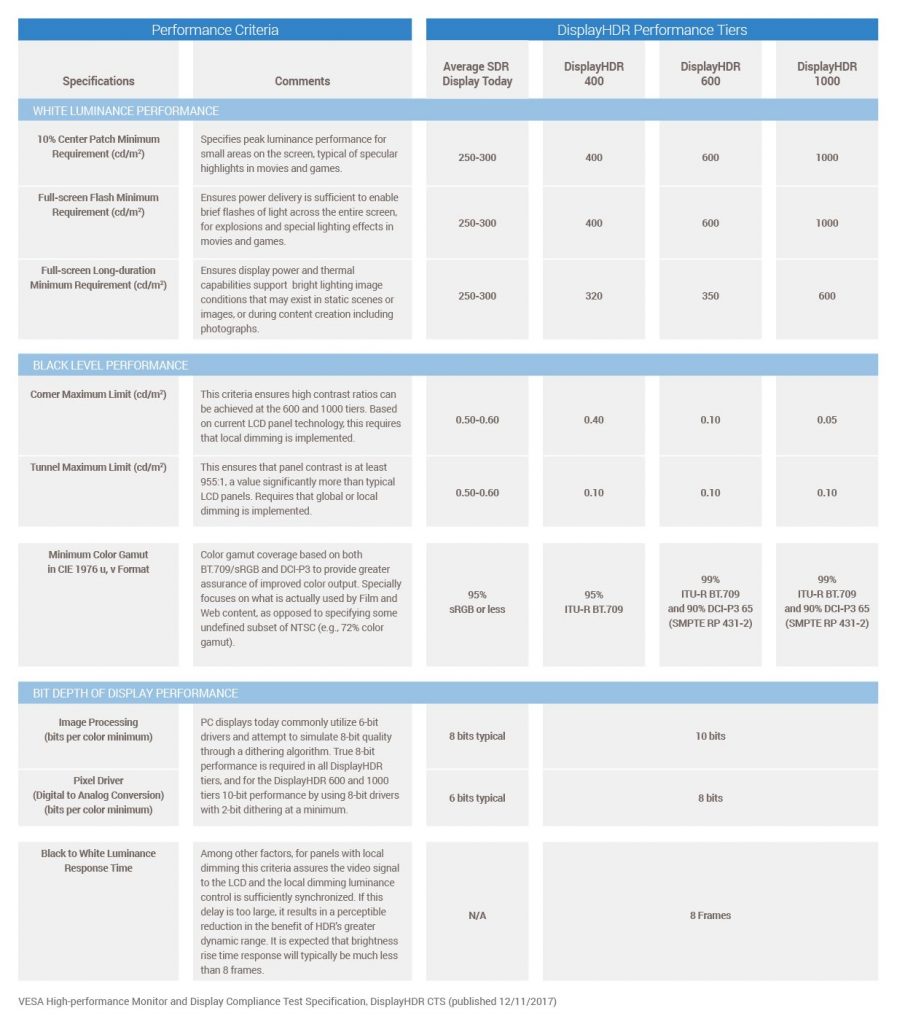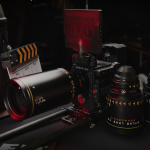High Dynamic Range (HDR) technology is changing the way we shoot, edit and consume video by capturing and displaying higher contrast and more vivid and lifelike colors. In our previous post in this series, we gave an overview of this technology, how it works and why it’s changing the game for filmmakers.
For our next post in this series, we’re going to look at hardware required to grade and deliver HDR-ready content, namely we’ll review the various HDR video monitor options you can use to grade footage. Most quality cameras are already HDR-ready – from the cheapest DSLRs to the most expensive cameras. But most monitors and displays available today don’t support HDR. So, while our cameras can capture the full range of HDR colors, most of us never see the results.
But this is starting to change. If you are a filmmaker who wants to be able to shoot, grade and deliver HDR video, you increasingly have some display options. In this post, we’ll take a look at the range of options currently on the market – from the professional to the affordable – and what specifications you’ll want to look for before purchasing.
HDR Monitor Specifications Review:
The term ‘HDR’ is thrown around a lot in monitor marketing. Many displays are labeled HDR when their specifications go beyond SDR. But, they often the fall short of what are considered HDR requirements. In fact, the range of specifications between various HDR labeled monitors can be extremely broad. So, purchasing monitors for HDR grading, you’ll want to check the following specifications first:
-
- Nit range: When it comes to Nit range, the higher, the better. Generally, a monitor that can deliver at least 600-1000 Nits of peak brightness will suffice. But, don’t forget to consider dark values. To compensate for reaching brighter brights, some displays will shift their entire range up along the scale, meaning the darks become less dark. Look for displays that also push into the .02-.05 Nit range.
- Color Range. In our earlier post, we discussed introduced the Rec.2020 color gamut as the standard which HDR was created around. While many cameras can capture this range of color, very few displays can show its full range (even professional grade monitors). So, most monitor specifications will list Rec. 2020 as a percentage. If you don’t see Rec. 2020 mentioned, look for DCPi_P3 and Adobe RGB, both which offer a considerably wider range of colors than sRGB color.

Image source: http://www.displaymate.com/Display_Color_Gamuts_1.htm
- Bit Depth. It may seem that, unlike brightness and color which fall along a spectrum, either you’re monitor will come with 10-bit color or it won’t. However, some monitors may achieve 10-bit color processing but the panel itself may support lower 8-bit FRC color depths with added “dithering” to simulate a larger bit depth.
Studio Reference Monitors | $20k-50k
If you’re a large studio and budget is not a limitation, their are a number of spendy studio grade monitors available that will allow grading for highest quality HDR output. Why are these monitors so expensive? Studio reference displays are designed with color accuracy and standards conformance in mind and they have the lowest deviation from the target color space as is possible. However, in addition to their astronomical expense, another downside with these monitors for a smaller studio or individual editor, is that they often only support professional inputs and signal standards that match the frame rate and resolution of the display’s panel.
Examples:
- Sony PVM-X550
- CanonDP-V2421 Reference Display
- TVLogic LUM 310R HDR Reference Master Monitor
- Dolby® Professional Reference Monitor PRM-4220
- FlandersScientific XM651U
Dolby Vision Certified Monitors:
To grade and display your footage in Dolby Vision, you need a Dolby certified monitor. Dolby dictates this monitor must have a minimum peak luminance of 1,000 nits, a minimum contrast ratio of 200,000:1, support for 100% of the P3 color gamut, support for Rec 2020 and for SMPTE 2084. There are only a few monitors that meet the Dolby Vision standard and all fall into the list of professional grade reference monitors above, including Dolby PRM-4220, Sony BVM-X300, Canon DP-V2420 and FSI XM310K.
Lower Cost Options | $4k and under
Production Monitors
Unlike the really expensive reference monitors listed above, production monitors are less expensive professionally oriented monitors. They are designed to be displayed on set or location are designed to display an image coming directly off of a camera. They are, therefore, bright enough to be seen in a variety of locations and environments, with features that help with exposure and focus. They often feature battery power mounts, smaller (more portable) display sizes, and multiple kinds of inputs or output. So, they aren’t necessarily designed to be used for in-studio grading, but they do offer quality HDR representation that can be used to grade.
Examples:
Consumer HDR Displays:
The most affordable way to grade for HDR is by using a consumer-grade HDR television, gaming monitor, or video and photography editing monitor. With most of these monitors, there will be even more variation in the color of the display than in the production or reference displays. And, it’s not quite as simple as connecting your computer monitor to the display via an HDMI cable – You’ll either need to use software like DaVinci Resolve Studio 12.5+ with an HDR mode. Or, you’ll need additional hardware like an HD Fury Integral2 to support full HDR signals. To learn more about how to use these consumer grade monitors without losing any HDR signals, refer to this Mystery Box article, which goes into much more depth on this subject.
And, because these monitors range in terms of intended use, it’s extra-important to review the specifications if you plan to use them to grade.
Examples:
VESA HDR certification:
In addition to the two specific examples above, another resource can be found via a list of VESA HDR certified products, the industry’s first standard specifying HDR quality. The High-Performance Monitor and Display Compliance Test Specification (DisplayHDR) from VESA defines the quality through measurements including luminance, color gamut, bit depth, and rise time. The consumer grade monitors on this list are broken into three tiers: HDR1000, HDR600 and HDR400 which refer to the peak brightness requirements. Each category comes with a list of requirements (visible in the chart below) and corresponding certified products within each category are viewable on their website.
Work-arounds for non-HDR monitors
Just like the spectrum of options for HDR monitors, there is also a large range of non-HDR monitors. It is possible to use these monitors to emulate HDR, but because of the growth in availability of commercial HDR monitors (plus, the relative low cost of production monitors), we’re not going to get into how to perform these work-arounds. If you’re curious, we’ll again send you over to this great Mystery Box article, which includes a section for emulating HDR Video at the bottom of the post.



